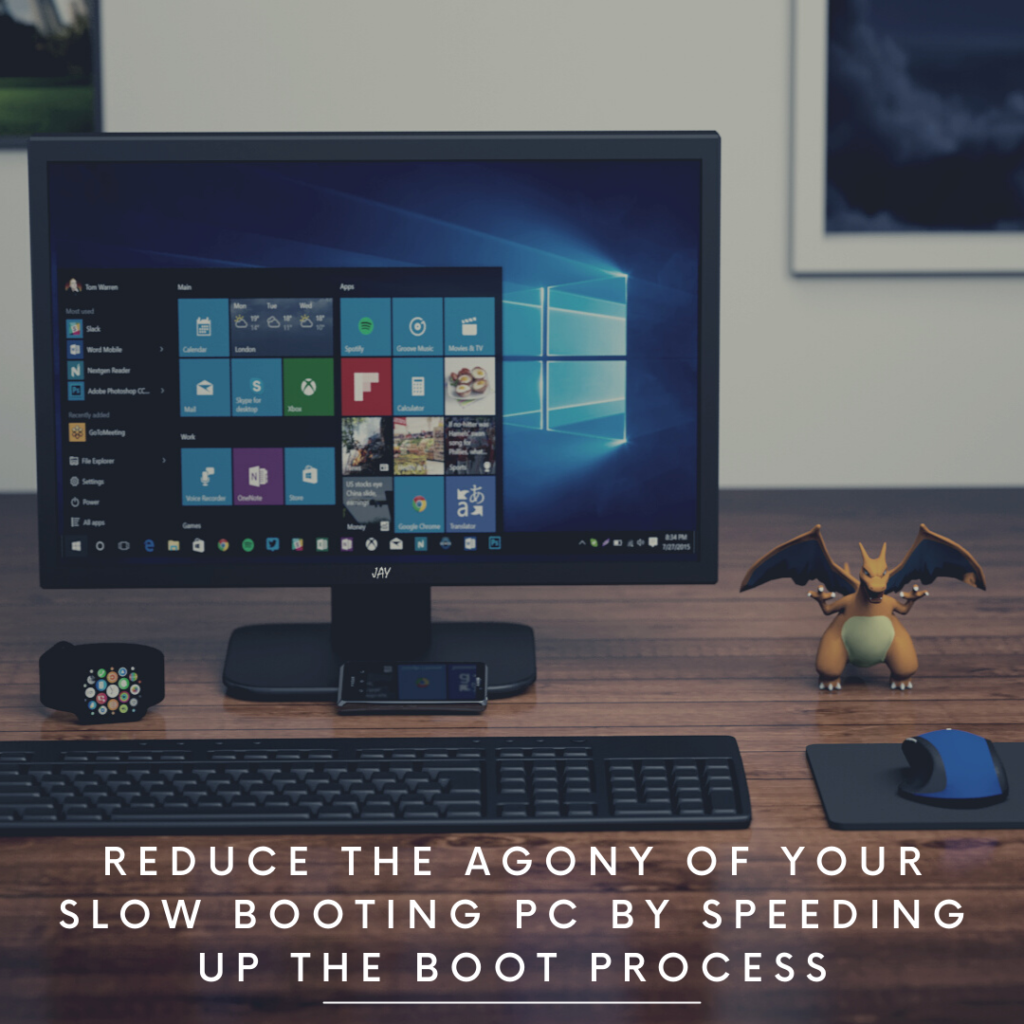
In today’s fast-paced world, a slow-booting computer can be agonizing. Is your computer stuck with the slow boot process? Or are there steps you may take to add a little speed to your PC’s start time?
Let’s take a look at a few steps you can take to speed up the boot time of your PC.
Turn on fast startup
You may or may not know of this handy little feature. Fast startup is a bit self-explanatory and does what you think it does, speeds up the startup process. This is the first step all of us should make when increasing the booting process.
Fast startup is kind of in-between hibernation and shutting down. You, the reader, are most likely familiar with both hibernating and shutting down. Let’s throw sleep into the mix as well. When you get up from your pc to run to the restroom or do something else, you may put your computer to sleep. Sleep is a power-saving mode that lets you return to your PC and start where you left off. Hibernate is similar to sleep, but it saves the information to the hard disk, allowing the computer to turn off completely, using no energy. When you restart, you’re back to where you left off (albeit, not as quickly as sleep). When you shut off your computer, it closes all open programs and the operating system. When you restart your computer, you must go through the boot process.
When you utilize fast startup, it does not save your open applications as hibernation does, but it puts the OS into hibernation, letting you start up more quickly.
To turn fast startup on or off, head to Settings > System > Power & Sleep and click the Additional Power Settings link on the right-hand side of the window. From there, click Choose What the Power Buttons Do, and you should see a checkbox next to Turn on Fast Startupin the list of options.
Upgrade to a solid-state drive
If your PC doesn’t already use a solid-state drive (SSD), this is a measure you can take to increase your boot times. You’ll also enjoy faster (almost instant) launching programs. This is due to the hard disk drive (HDD) being mechanical, with moving parts. An HDD uses a mechanical arm to read the needed information from a particular location on the storage platter. Conversely, an SSD stores information in microchips with no need for moving parts. To help you picture this, you may think of it as a large and more sophisticated memory stick.
Reduce the number of startup programs
Whenever you first get a PC, hook it up and power it on, a bunch of programs launch when you start up the PC. We don’t even need some of those programs. Other programs that you would like to launch at startup are not launching. You can change that and here’s how.
To view what launches at startup, press Ctrl+Shift+Esc and bring up the task manager. Once the task manager is open, click More Details along the bottom, and then navigate to the Startup tab. In the Startup tab, you can see a list of all programs that launch at startup as well as a Windows’ estimate on how much it affects your boot time.
When you’re reviewing the program list, if you see a program that you don’t need at startup, you may remove it by going into that program’s settings and “uncheck” the option to launch with Windows. If you do not find the option in the program’s startup settings, you are still able to prevent it from launching at startup by disabling it in the task manager. Another option for you is to open settings > Apps > Startup and turn off any program that you don’t want to launch at startup.
Adjust your BIOS settings
For those of you who are not familiar with the BIOS, it is the first thing you see when you turn your PC on. The BIOS controls how your PC boots. You need to change the “quick boot (or whatever it is called on your motherboard)” setting which will make a series of adjustments for you. What the BIOS quick boot feature does, unlike the fast startup feature, is it bypasses some of the initial tests your computer runs when it first starts up.
To enter the BIOS setup restart your computer and press the “delete” key (or another key, if prompted) during startup. Once you are on the BIOS screen, search for the quick boot settings in the menu.
